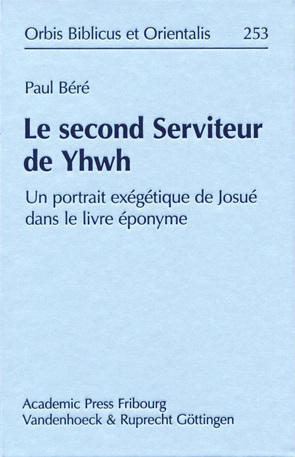Le second Serviteur de Yhwh
Un portrait exégétique de Josué dans le livre éponyme
Paul Béré
Any attempt to interpret the personality of Joshua in the book that bears his name generates conflicting interpretations of what he represents. In the view of some commentators, the protagonist of the narrative cuts the image of ‚another Moses‘; whereas for others, he is the ‚prototype of kings, particularly in the mode of Josiah‘; still, for some others, he is the ideal successor, in his role as the successor of Moses, and a model for the leaders of Israel. In reality, these multiple positions or theses diverge only on the surface level. In fact, each one retains its significance in what we could refer to as the ‚the literary frame of reference,‘ that is, Gen.–Josh. (the Hexateuch); Josh.–2 Kings (the Deuteronomistic History); and Gen–2 Kings (or the Great History of Israel). The question remains, however: considering the book of Joshua in the literary frame of reference itself, who is the Joshua, the protagonist? Paul Béré argues that, viewed from the perspective of its internal logic, the Joshua narrative constructs the figure of its protagonist by portraying him as the ’second‘ Servant of Yhwh, in parallel with the figure of the first, namely, Moses.Furthermore, new evidence shows that the crossing of the Jordan (Jos 3–4) provides the protagonist a singular opportunity to manifest to the people his unique relationship with Yhwh. This threshold, consequently, functions as a decisive space where the personalities of both Moses and Joshua are demarcated and constructed on either side of the Jordan: Moses in the east and Joshua in the west, i.e., the Promised Land. On the part of Joshua this critical space allows him to assume several functions, seven of which are identified in this study. At the end of the analysis, this study calls for further investigation into the social and historical factors that ground the twinning of the two characters of Moses and Joshua.



















